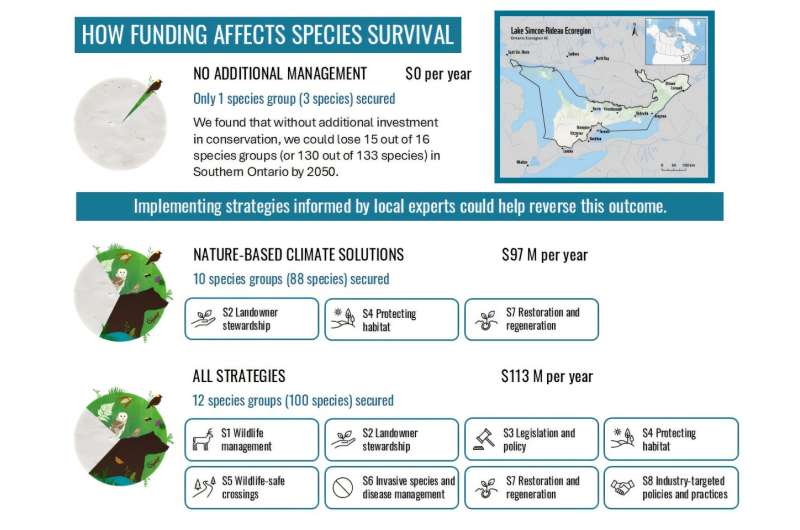A recent study warns that 130 species in Southern Ontario are at risk of local extinction by 2050 unless immediate conservation actions are taken. Conducted by the University of British Columbia and the World Wildlife Fund Canada, the research highlights alarming findings regarding the region’s biodiversity, revealing that 98% of these species could vanish within the next 25 years without intervention.
The study, published in the journal Ecological Solutions and Evidence, focuses on the Lake Simcoe-Rideau ecoregion, known as a biodiversity hotspot. Among the species at risk are the black bear, the short-eared owl, and the Blanding’s turtle. The researchers emphasize that an investment of just $7 per Ontarian in eight targeted conservation strategies could lead to the recovery of approximately 75% of these threatened species.
Financial Investment for Recovery
According to the study, an annual investment of $113 million in various conservation efforts could help restore 100 of the at-risk species. This amount represents less than one-tenth of one percent of Ontario’s projected provincial budget for 2024. Abbey Camaclang, a researcher at UBC’s Faculty of Forestry and one of the authors of the study, stated, “If Ontario continues with a ‘business as usual’ approach, 130 species—or 98% of those at risk—could disappear from the region by 2050.”
The eight conservation strategies identified in the study include habitat protection, wildlife management, and enhanced legislation and policies. The analysis utilized the Priority Threat Management (PTM) tool, developed by Dr. Tara Martin and her team, which helps pinpoint the most cost-effective conservation actions based on expert knowledge.
Broader Impacts of Conservation Efforts
Dr. Tara Martin, the senior author of the study and a UBC professor, noted that the PTM framework not only aids in the recovery of endangered species but also offers additional benefits. These strategies could improve water quality, create jobs, and enhance carbon storage, addressing multiple environmental and societal challenges.
The study indicates that by conserving and restoring habitats in Southern Ontario, the region could prevent over 11.2 million tonnes of CO2 equivalent from being emitted while sequestering 137.6 million tonnes of CO2 equivalent. This would contribute significantly to Ontario’s efforts to reduce greenhouse gas emissions over time, aligning with broader climate goals.
James Snider, Vice President of Science, Knowledge, and Innovation at WWF-Canada, stressed the urgency of the situation, stating, “Without new investments and strong legislation, we risk losing species like the American bumble bee, the barn owl, the Eastern wolf, and the piping plover.”
The findings of this research have already been applied in other regions, such as the Wolastoq watershed in New Brunswick, where WWF-Canada has successfully restored over 5,300 hectares of habitat and planted more than 31,000 trees and plants.
By implementing the PTM framework in the Lake Simcoe-Rideau ecoregion, decision-makers can identify effective conservation actions and their broader benefits, thereby providing a clear roadmap for species recovery. The study underscores the importance of immediate action to protect not only the region’s biodiversity but also the well-being of local communities.
For more information, see Abbey E. Camaclang et al., “Nature requires investment: Applying priority threat management to support biodiversity and climate targets,” published in Ecological Solutions and Evidence in 2025.







